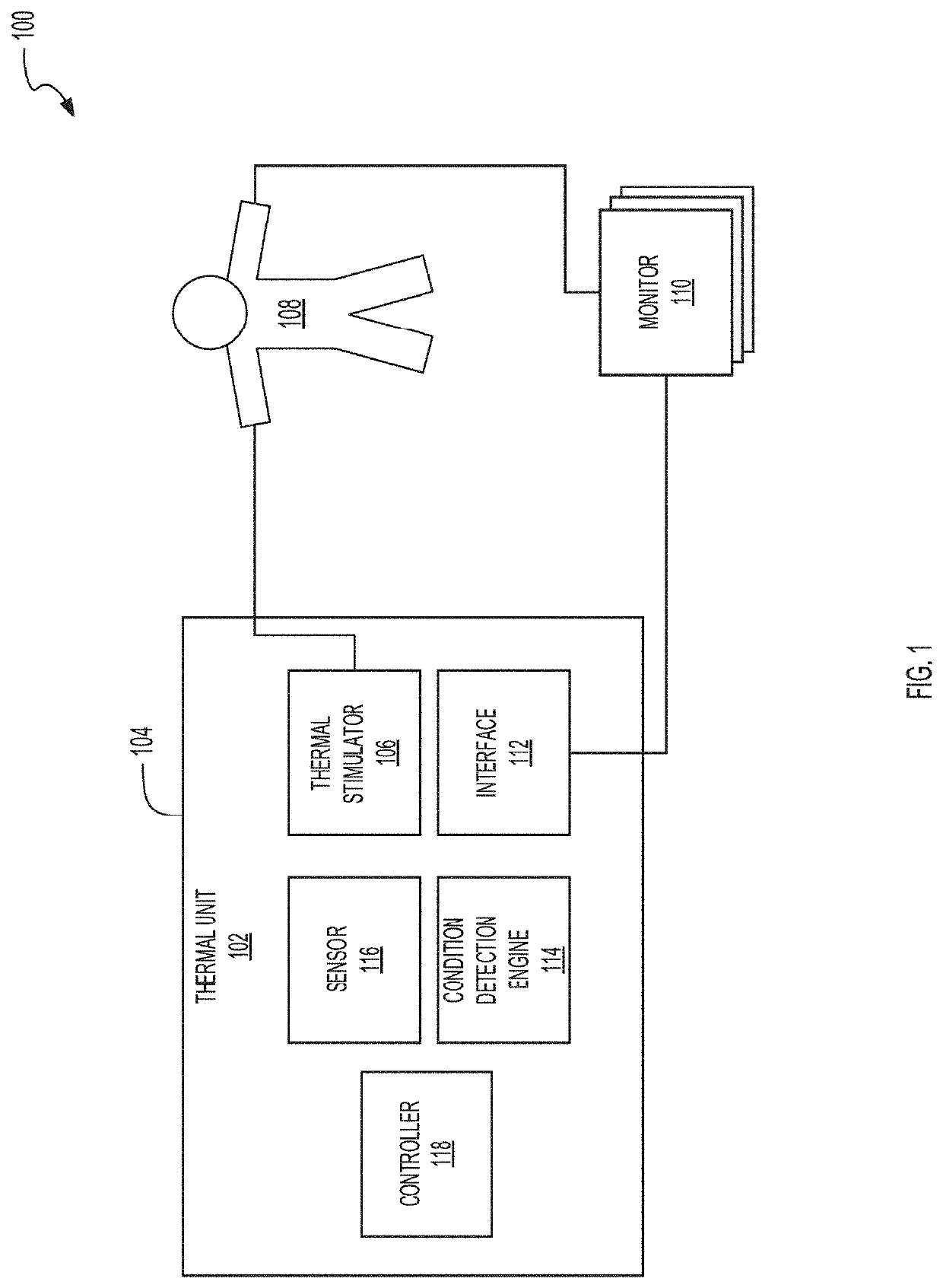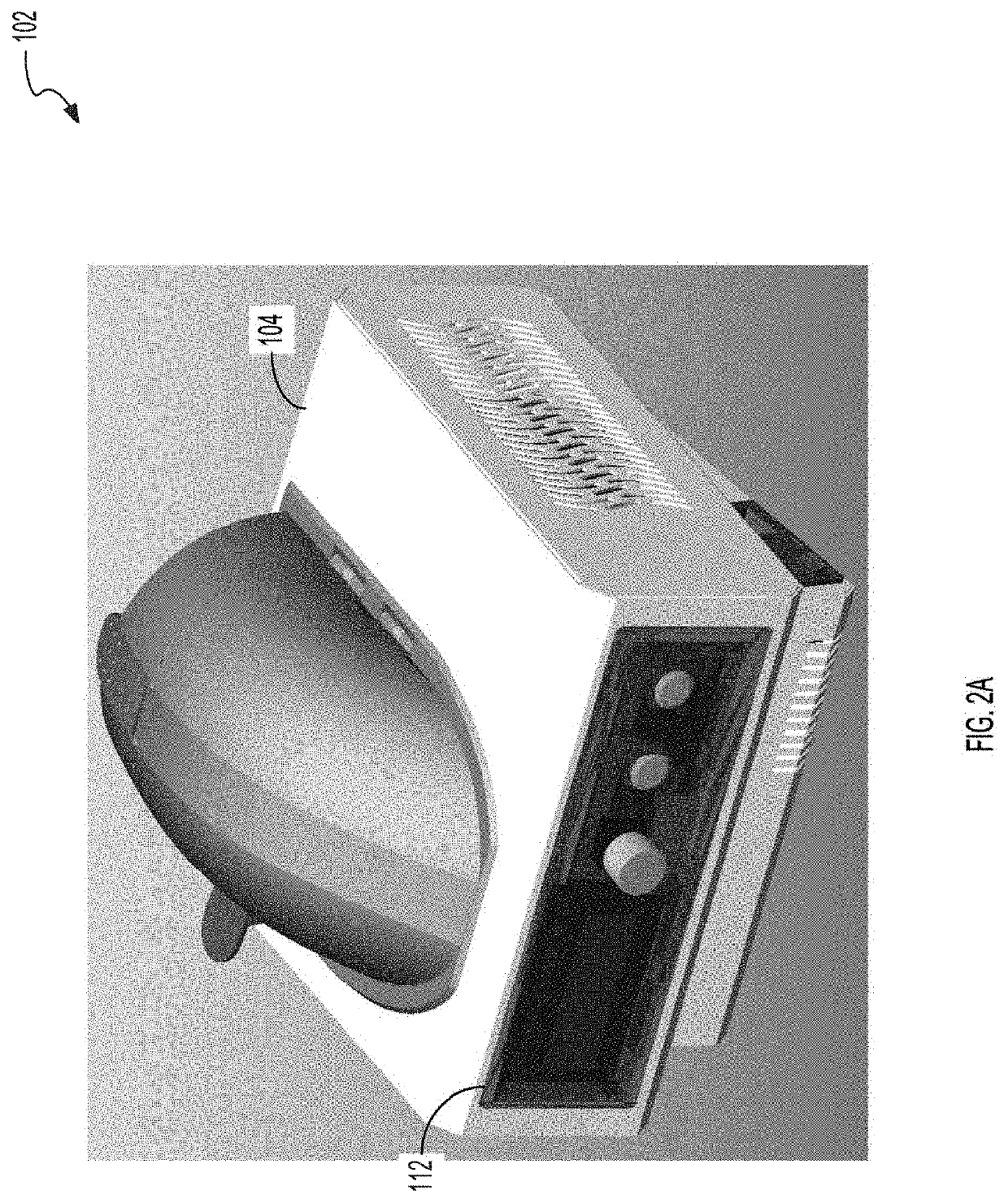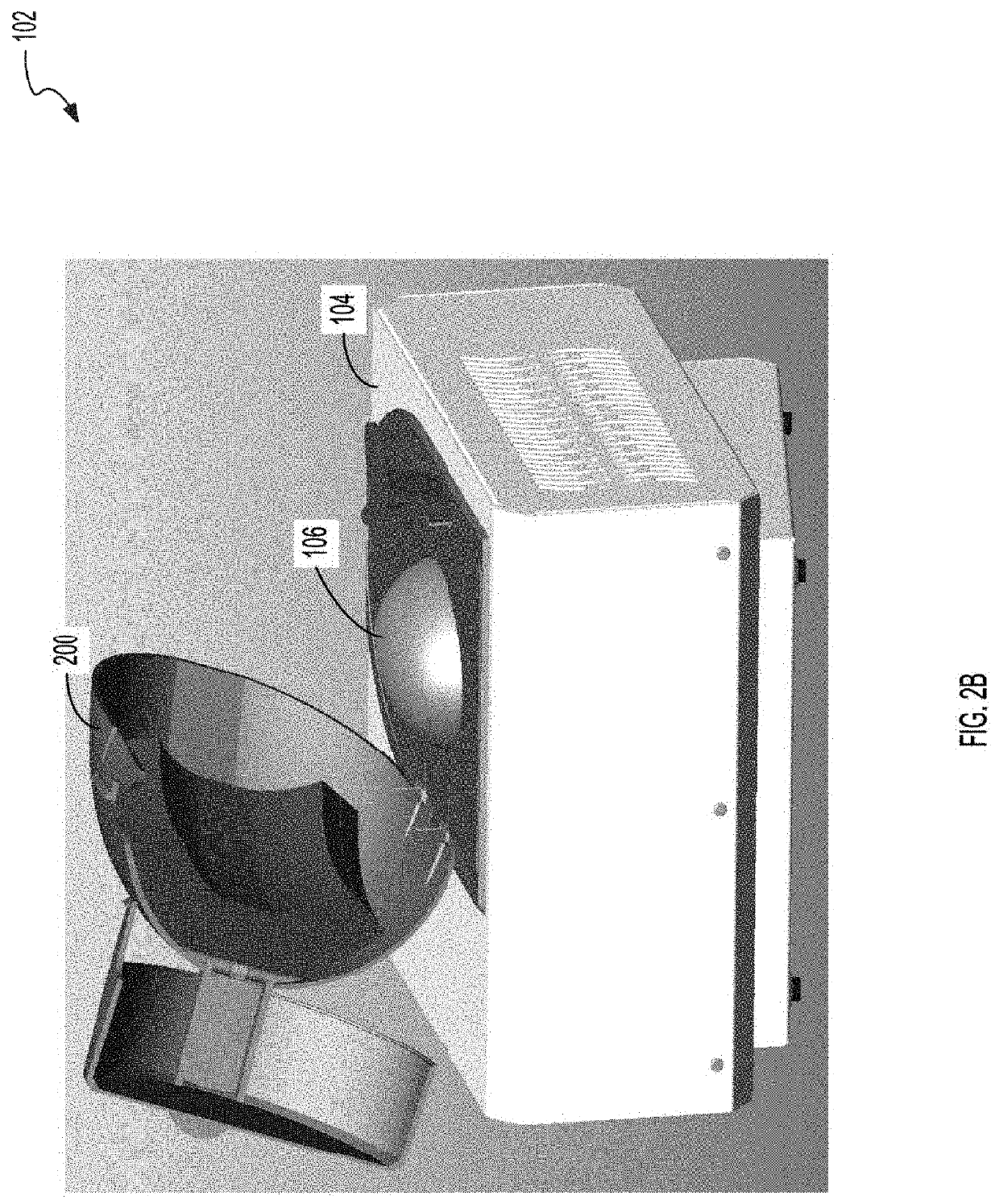Methods and systems for concussion management using cold stimulus
a technology of concussion management and cold stimulus, applied in the field of methods and systems for concussion management using cold stimulus, can solve problems such as difficult diagnosis of concussions
- Summary
- Abstract
- Description
- Claims
- Application Information
AI Technical Summary
Benefits of technology
Problems solved by technology
Method used
Image
Examples
Embodiment Construction
[0018]The various concepts introduced above and discussed in greater detail below may be implemented in any of numerous ways, as the described concepts are not limited to any particular manner of implementation. Examples of specific implementations and applications are provided primarily for illustrative purposes.
[0019]The present disclosure describes systems and methods to non-invasively determine whether a patient has an autonomic dysfunction. In some implementations, the autonomic dysfunction can be a neurological dysfunction. The system can measure a patient's autonomic nervous system response to a stimulus. The stimulus can be a thermal stimulus, such as a cold temperature (e.g., 0° C.) or a hot temperature (e.g., 100° C.). The system can apply the thermal stimulus to an extremity of the patient, such as the patient's hand or arm.
[0020]The system can measure the patient's autonomic nervous system response to the thermal stimulus to diagnose the patient with an autonomic dysfunc...
PUM
 Login to View More
Login to View More Abstract
Description
Claims
Application Information
 Login to View More
Login to View More - R&D Engineer
- R&D Manager
- IP Professional
- Industry Leading Data Capabilities
- Powerful AI technology
- Patent DNA Extraction
Browse by: Latest US Patents, China's latest patents, Technical Efficacy Thesaurus, Application Domain, Technology Topic, Popular Technical Reports.
© 2024 PatSnap. All rights reserved.Legal|Privacy policy|Modern Slavery Act Transparency Statement|Sitemap|About US| Contact US: help@patsnap.com










